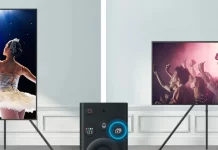When the Era of button phones ended and the Era of smartphones began, Samsung divided its phones into several main lines: the premium line S-series, the mid-range line M-series, and budget phones A-series. Over time, the distinctions are erased, so in the last few years in the A-series, there are decent models of phones costing about $ 400, which can no longer be attributed to the budget series.
Samsung Galaxy A series history and evolution
The Samsung Galaxy A series originated in 2014 with the launch of the Galaxy Alpha. Following market research, Samsung recognized the need for a more distinct and recognizable phone lineup, leading to the introduction of the A series in 2015. Initially, the phones were named A3, A7, etc. However, by 2019, Samsung faced a naming challenge, as newer models like the A8 (2018) significantly outperformed their earlier counterparts, such as the A8 from 2015. To resolve this, Samsung revamped its naming strategy in 2019, adopting a new system with designations like A10 and A20. This change enabled more precise identification of phones by year and class, a practice maintained to the present.
Model number samsung Galaxy A series decode

If you look at the model number of the Samsung A-series smartphone, here’s what information is in that model number
- Galaxy – Samsung’s product line is now just a recognizable brand.
- A is a series of cell phones.
- 5 – phone model in the series; the higher the number, the better the phone.
- 4 – The year of the smartphone’s release was not used until 2019.
- 0 – 2019
- 1 – 2020
- 2 – 2021
- 3 – 2022
- 4 – 2023
- 5 – 2024
- 6 – 2025
- 7 – 2026
- 8 – 2027
- 9 – 2028
- 5G – In this case, 5G – phone features indicate that the phone can work with fifth-generation 5G mobile networks.
You can also see the phone model A05s; the letter S indicates that the phone uses a Snapdragon processor.
Samsung Galaxy A series model list by year
| year | Model Phone series A |
| 2024 | A05, A05s, A15, A15 5G, A25 |
| 2023 | A04e, A04, A04s, A14, A14 5G, A24, A24, A34 5G, A54 5G |
| 2022 | A03 Core, A03, A03s, A13, A13 5G, A23, A23 5G, A33 5G, A53 5G, A73 5G |
| 2021 | A02, A02s, A12, A22, A22 5G, A32, A32 5G, A42 5G, A52, A52 5G, A52s 5G, A72 |
| 2020 | A01 Core, A01, A11, A21, A21s, A31, A41, A51, A51 5G, A51 5G UW, A71, A71 5G, A71 5G UW |
| 2019 | A2 core, A10e, A10, A10s, A20e, A20, A20s, A30, A30s, A40, A50, A60, A70, A70s, A80, A90 5G |
| 2018 | A6, A6+, A6s, A7, A8, A8+, A8 star, A8s, A9 |
| 2017 | A3, A5, A7 |
| 2016 | A3, A5, A7, A8, A9, A9 pro |
| 2015 | Alpha, A3, A5, A7, A8 |
In the table you can see the phone model and the year of its development. Often a phone model is developed in 2020, for example, and production and sales start in 2021. But it happens that the phone model starts production even earlier, for example, phone model A04 (2023) started production in the 4th quarter of 2022; this model will be discontinued in 2024. If you want to know the exact production date of the phone, you can do it by serial number. Read more in the article “Samsung phones serial number production date“.
What is the A series in Samsung phones?
The Samsung Galaxy A series is a line of smartphones that initially targeted the lower price range but has expanded to include mid-range phones. This series was initially conceptualized as “Alpha,” aiming to offer affordable phones that could compete with higher-performing phones from Chinese manufacturers such as Xiaomi and Meizu. Despite Samsung’s efforts, the Galaxy A series faced challenges in competing effectively. To address this, the series evolved into a hybrid offering, featuring phones priced below $100 and models exceeding $400. The idea behind the Galaxy A series was to eventually replace the M series, a transition that began in the United States in 2022 and in Europe in 2023. The Galaxy M series is still available in some countries, but its future is uncertain.
Samsung’s Galaxy A series is characterized by its use of cost-effective processors, which tend to be lower in performance, often using 3-5 years old technology in lower-priced models. In contrast, phones in the series five and above feature mid-performance processors. The screens in the Galaxy A series range from the more affordable 60Hz IPS display to the higher-quality 120Hz Amoled displays. The Galaxy A series is designed for consumers who want a smartphone that looks good and is reasonably priced, catering to those who are willing to spend either a minimal amount or up to around $500 for a mid-range phone.





